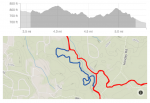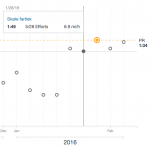
Workouts have the potential to turn into meticulous recipes with specific, prescribed amounts of each component combined in a specific order. There is definitely a time and a place for this type of training, but many skiers can benefit from less regimented workouts.
Informal fartlek workouts can be enjoyable and translate well to racing. “Fartlek” is a Swedish word for speed play, and is a way of blending interval work with continuous skiing.
Variable terrain and conditions naturally dictate effort while skiing and it can be hard to follow specific intensities and durations unless ideal loops are available.
However, the variability of the trails can be used to set up efforts of varying duration and intensity. Surging hills, hammering certain sections of a trail and throwing accelerations can all be pieces of an interval workout strung together with easy skiing. The unpredictable pattern of the efforts and challenge the skier in a similar way to racing.
One tool that can make fartleks workouts more fun and easier to quantify is Strava. Strava is an activity tracking website and mobile app most well known in the cycling world. It allows athletes to upload workouts to the site from a GPS watch to a profile. The site can record and quantify daily and weekly training, but can also compile data of specific segments of a ski.
Strava segments are specific sections of a GPS file that users can designate as a segment. They can include any distance or grade but are often climbs. The software creates a leaderboard of the best times of any Strava users who have skied over the segment. It will also keep track of the times for each occasion you ski over a section.
The benefit of using it in a fartlek-type workout is you can compare your times on certain hills or sections for all the times you’ve ever skied it without having to time yourself. The leaderboard be a bit of motivation for the competitively driven. It is possible to make private segments to use primarily as a comparison against yourself.
Unlike Strava cycling segments, ski segments cannot be searched for, but they will be visible on your activity when you ski over them.
The Workout: Ski Fartleks
Warmup: 30 minutes of Level 1 (L1) skiing with some accelerations during the second half
Workout: 40-60 minutes of fartlek skiing:
The total amount of high-intensity skiing can vary depending on the intended training stress for the day. I generally aim for about 20 minutes of Level 4 skiing. Efforts are optimally kept short (1-6 minutes) so the intensity can be kept high. The intensity drops between efforts while continuing L1-L2 skiing.
Cool down: 20-30 minutes of L1 skiing
Kaitlyn Patterson
New to the FasterSkier team, Kaitlyn is a silent sports all-arounder, competing in cross-country skiing, cycling and triathlon since graduating from the University of Michigan, where she ran cross country and track. Kaitlyn is intrigued by the complexities of cross-country ski racing and is excited to start in the elite women’s field at the 2016 Birkie.





